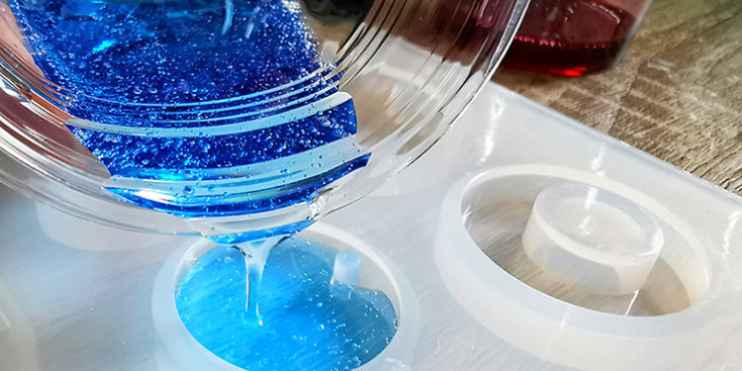So, you’re walking on the floor, and you feel like they’re not leveled completely. As a result, you’re observing the high spots of the floor. Now, what can you do about it? And, can you use a self-leveling compound over hardibacker?
Well, yes, you can apply a self-leveling compound over the hardibacker. In fact, you can even apply directly to the hardibacker. But wait, let me tell you something.
There are some guidelines that you’ll need to follow before applying this compound. Moreover, you’ll need to develop a plan before doing this. Because if you don’t follow a proper plan, you can mess it up quickly.

Don’t worry; we’re here for you. As a matter of fact, we’ve prepared this complete guide for you. Here, we’ll discuss how you’ll need to apply the leveling compound over the hardibacker.
We’ll even discuss some common questions and why these compounds are necessary. So, without any further ado, let’s get right into it.
Why Do You Need Self-Leveling Concrete?
Usually, self-leveling compounds are used on uneven floors. But what is this compound? Well, it’s a chemical mixture that can smooth out the levels.
Moreover, it can fix any unevenness of the floors and level the surface. So, how does self-leveling compound work?
When you pour this compound on a floor, it runs to every corner across the floor. As a result, it creates an even and flat surface easily. In fact, you won’t have to put in much effort at all. Just pour the compound and that’ll do the trick.
Apart from this, self-leveling compounds have other advantages as well. Let’s take a look at them:
1. Doesn’t Need Water
Yes, that’s right. You need to add in more water to place or mix the product. At times, people use too much water in their concrete. As a result, they create a mess because of it.
But, in this case, you won’t need to add in much water. Hence, you won’t create any fuss or mess with this compound.
2. Creates an Even Surface
This is the main advantage of the self-leveling compound. It can create a smooth and even surface whenever you pour it on any surface.
Also, it doesn’t only stop there. It can contribute to making the floors strong as well. As a result, the floor is durable and even. Due to this advantage, many people use leveling compounds too on roof underlayment.
3. Has a Great Compatibility
Yes, you can use this concrete on other surfaces as well. Starting from ceramic tile, wood, LVP, and plywood, you can use the compound on any surface. Hence, you can also use it over a hardibacker and any non-flexible surface.
4. Easy User Interface & No Allergic Reaction
The compound is straightforward to use. In fact, it’s so easy that anyone can use it. However, you’ll need to plan before using it to be on the safer side.
Many people’s people ask – Is self-leveling cement toxic?
Well, no, this compound isn’t toxic at all. Moreover, it doesn’t have any allergic reaction. At times, many workers get chemical allergies by using different concrete. But that’s not the case here. So, you can use it without any hesitation.
5. Dries Fast & Is Naturally Resistant to Mold
The compound dries faster than other substances. So, you won’t have to wait for a long time after applying it to your floor.
Moreover, this concrete is more durable than other types of concrete. And it’s naturally resistant to mold growth. As a result, it doesn’t matter if you’re using it on a wet surface, it’ll still resist any type of mold growth.
Should You Use Self-Leveling Compound Over Hardibacker? (Our Opinion)
Till now, we’ve discussed the advantages of using a self-leveling compound. But wait, does this mean you can use them directly on a hardibacker?
Well, it’s better if you use a self-leveling compound on a hardibacker. This is because this compound works great over one. The mixture of the compound will blend with the hardibacker.
Many people ask – do I need primer for self-leveling compound?
Well, you won’t have to use any primer because of the blended mixture of the compound to your floor. And, if you still want to use any primers, use spray paint to apply them. However, don’t use multiple buckets on it. Just use some at a time and that’ll do the trick.
In the end, you must seal off all the points. This is because the compound can pour over to any of the little holes in your floor. So, it’s better to seal off any points if you don’t want this compound to reach it.
How to Use Self-Leveling Compound over a Hardibacker?
By now, you’ll know almost everything about the self-leveling compound. So, you can just pour them on your floor and hope for the best, right? But wait, hear me out. It isn’t as easy as it sounds.
Moreover, you can mess up things quickly if you don’t have a plan. Even the most straightforward work like mixing can go wrong if you don’t do them correctly. Just like this, a lot of things can go wrong.
But wait, we’ve got your back. In fact, in this article, we’ve shown exactly how to install a self-leveling compound. We’ll even show the preparations you should. So, let’s not waste any more time and get right into it.
Tools
Yes, you’ll need a set of tools for the job. However, all of them are available and affordable. So, you can purchase them from a local store at a reasonable price:
- Floor cleaner (Link from Amazon)
- Spray bottle (Link from Amazon)
- Gloves (Link from Amazon)
- Mask (Link from Amazon)
- Goggles (Link from Amazon)
- Drill (Link from Amazon)
- Water (Link from Amazon)
- Bucket (Link from Amazon)
- Drywall (Link from Amazon)
After you’re done managing the tools and making all the preparations, let’s start:
Step 1: Prepare the Surface
So, how to prep floor for self-leveling compound? Well, the hardibacker board should be stable before you apply the mixture. If the surface isn’t stable, it’ll move throughout the process.
On the other hand, before starting, make sure that the surface is clean. This is because you want to apply the compound away from dust and debris. So, clean the floor using a floor cleaner.
Step 2: Apply Primer
Even though we’ve discussed that a primer isn’t needed, you should use it over a hardibacker. Hence, take a spray bottle and spray a bit of primer over the board.
Here, make sure the primer is dry before applying the compound. Because, if the primer isn’t dry, it’ll react with the compound. Make sure there’s enough air in the room after you apply the primer.
As a result, the drying process will be faster, and any type of unpleasant odor will eliminate quickly.
Step 3: Marks The Uneven Positions & Prepare The Compound
Firstly, mark all the uneven points over the board. Even though a hardibacker board is leveled, it can have rough spots over time. So, identify them and mark them.
After this, start preparing the compound. This is because this compound dries very fast. And so, you’ll have to finish the process quickly. That being said, start following the user manual to mix and apply the compound.
Wear your protective gear and start mixing the compound with water. Here, it’s better if you use cold water. Also, remember to use less water.
Step 4: Apply the Compound
Spread the compound, as discussed before. Here, you should apply them to the uneven areas. After the compound thickens, start using drywall to level them.
You shouldn’t use any more water or heat on the hardibacker board. This is because it’ll slow down the process of drying, and the compound won’t be stable. After you’re done applying it, the compound will dry out within 4-5hours.
Step 5: Clean Everything
Well, this is a no-brainer. You’ll have to clean it after you’re done. Clean the areas with a cleaner.
Also, don’t forget about the tools that you’ve used. Clean them with warm water. And, if they don’t clean thoroughly, separate them. This means you’ll use these tools only when you’re using a self-leveling compound.
Frequently Asked Questions
Can you use another layer of self-leveling compound over the first one?
Yes, it’s possible. But, make sure you’re using a primer.
How much thickness does the self-leveling concrete have?
Well, they have around 1/8 to 1inch of thickness.
How much can a 50lb self-leveling compound cover?
It’ll cover an area of 50 square feet and with a thickness of 1/8 inches.
Wrapping Up
That’s been it. We tried to clear every information about the self-leveling compound. Moreover, we even tried to explain some of your common questions in the FAQ session.
In the end, we’d like to say that it’s possible to use the compound on any surface. And, the compound is useful in leveling out the floors. Apart from this, if you’re not comfortable at using this compound over the board, get help from others.
So, can you use a self-leveling compound over a hardibacker? Well, you now know the answer to it. Good Luck.




